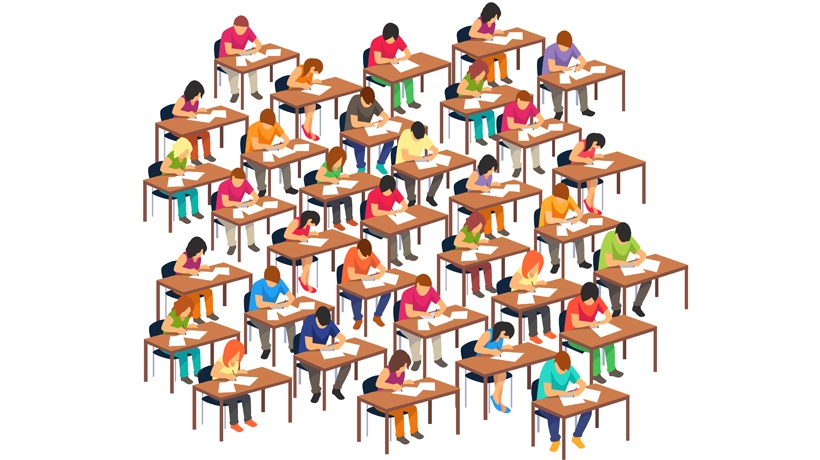Socioeconomic Status And Academic Achievement
According to a study by public school education news site, School News Network (SNN), socioeconomic status affects academic achievement; that is, poor students get just as poor test scores.
New data crunched by USATestprep showed that in tests ran on 8,000 students in 42 randomly selected schools, students living in communities with a higher percentage of owner-occupied homes scored higher compared to those who lived in communities with a higher rental percentage. Income, however, proved to be a non-factor, as those in the lowest income bracket fared better than the other income groups.

USATestprep admits this to be a survey result they did not quite expect, as prior surveys have consistently underscored the achievement gap between students of low-income and high-income families, not just in the United States but around the world. Researchers at MIT and Harvard University even conducted a study to explain this pervasive phenomenon and found that there’s a link between family income, brain anatomy, and academic achievement.
Which begs the question: Can this correlation between socioeconomic status and standardized test scores extend to the online learning sector?
Online Learning And Students’ Socioeconomic Status
Since its inception, online learning has been seen to address the age-long problem of accessibility for learners, including socioeconomically challenged students.
The popularity of massive open online courses (MOOCs) hedges on the assertion that openly providing courses to a massive audience levels the playing field for any student from any walk of life. It matters not that you’re an affluent child living in a first-world country, or a working student trying to eke out a living in a country ridden with unrest. As long as you have access to the internet, you have access to the same lessons and learning materials a well-off student typically has no trouble obtaining.
While open access supposedly equalizes students’ access to education, according to a study by MIT education researcher Justin Reich and Harvard Graduate School of Education’s John Hansen, even for online learning, the same socioeconomic hurdles exist.
They found that out of the students who registered in 68 free MOOCs offered by Harvard and MIT through online learning platform edX during the academic years 2012 to 2014, those with a college-educated parent are twice as likely to finish their courses compared to students without college-educated parents. Also, most of the younger students who enrolled in the MOOCs belonged to neighborhoods with 38% higher median income than average American neighborhoods.
These results only reiterate something already painfully obvious: Socioeconomic status indeed has an effect on learning, positive or negative, be it in-person or even online.
According to Reich, “MOOCs and other forms of online learning don’t yet live up to their promise to democratize education”.
Success Stories
Despite these limiting factors, it’s the educators’ and education regulators’ jobs to ensure that students, rich or poor, continue to learn their lessons effectively.
For example, Carlin Springs Elementary School, a low-income, largely Hispanic school in Arlington County, showed increased passing rates after school teachers and administrators put students through rigorous test prepping.
In a 2015 Washington Post report, it was stated that for the second year in a row, the school’s students showed positive testing results, with their third-graders showing a 95% passing rate in math, even outperforming the 84% passing rate of third-grader peers from the “largely wealthy, high-achieving Arlington school district”.
In this case, the test prep model proved effective in helping students from socioeconomically challenged communities cope with learning challenges.
However, it cannot be relied on as the sole and final solution to learning hurdles for students of low-income communities. It’s also worth noting that testing is but one of several measures to determine a student’s mastery of a school’s curriculum.
Still, it is a start.
Meanwhile, in New York City, Aljazeera America reported on the existence of a so-called roving “digital van”, that is, a mobile computer lab that was commissioned by the New York City Housing Authority.
The van travels around the city to provide broadband internet access, and one beneficiary, a single mother of four living in the Bronx named Marsha Robinson, shared that the initiative helped her earn an associate’s degree in applied science.
Robinson admitted that it “wasn’t eas,,” and she couldn’t have done it without determination, discipline, and of course, the digital van, which had been instrumental to the completion of her papers, homework, and other research work.
So do these two success story examples hint that low-income communities can still produce high-performing learners?
An introduction of the book Turning High-Poverty Schools into High-Performing Schools by education and leadership development experts William Parrett and Kathleen Budge answers in the affirmative: “Of course it is! […] any school willing to refocus its efforts can become a high-performing school.”
Final Word
There will always be obstacles to online learning, or learning in general, for that matter. This is why high-performance eLearning teams knowledgeable in the various challenges that students face on a regular basis are highly indispensable.









